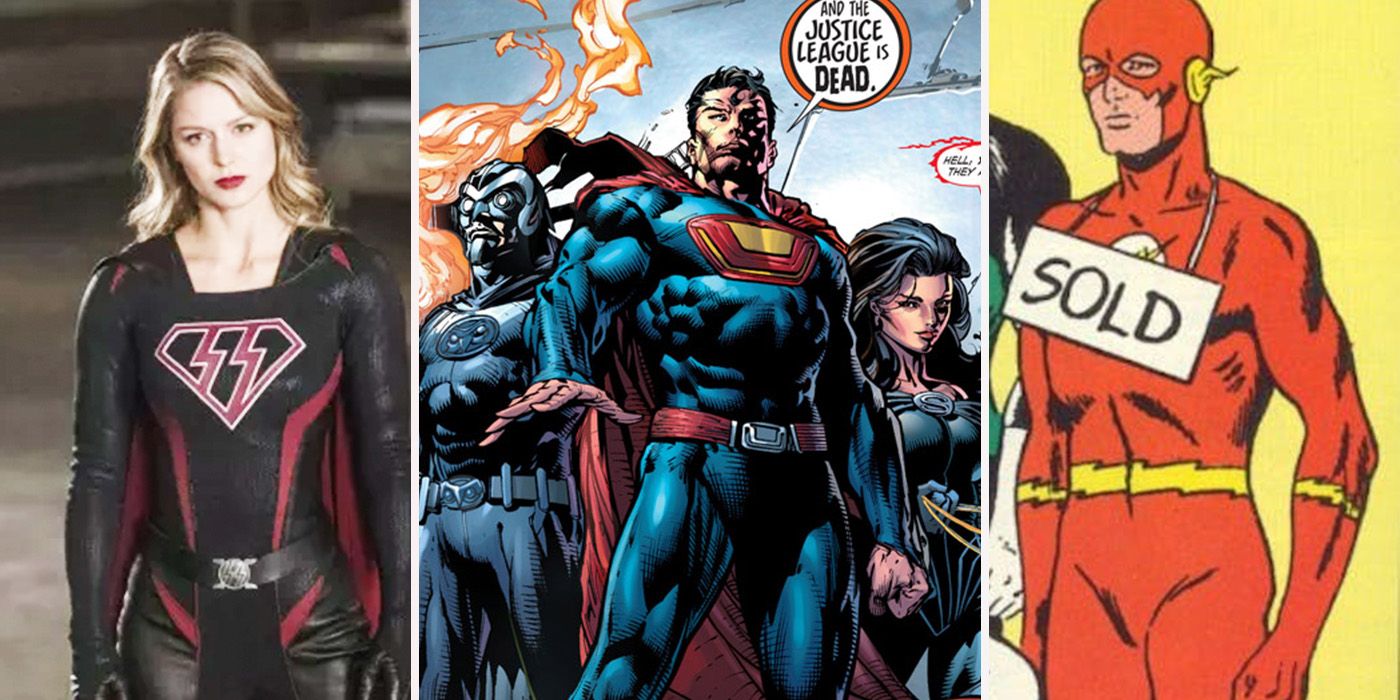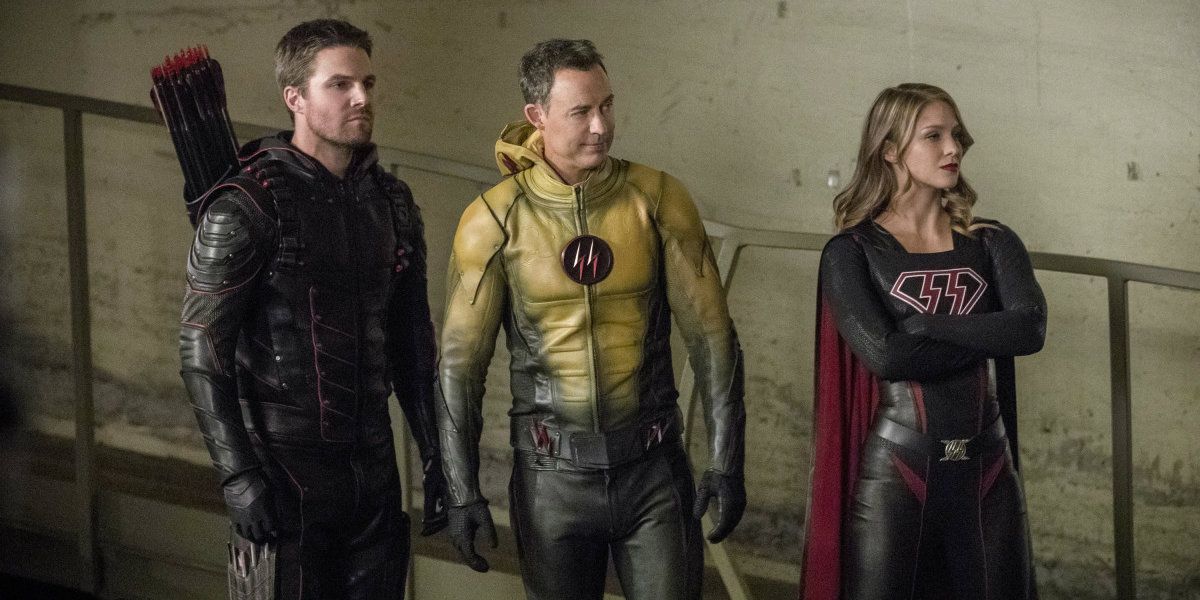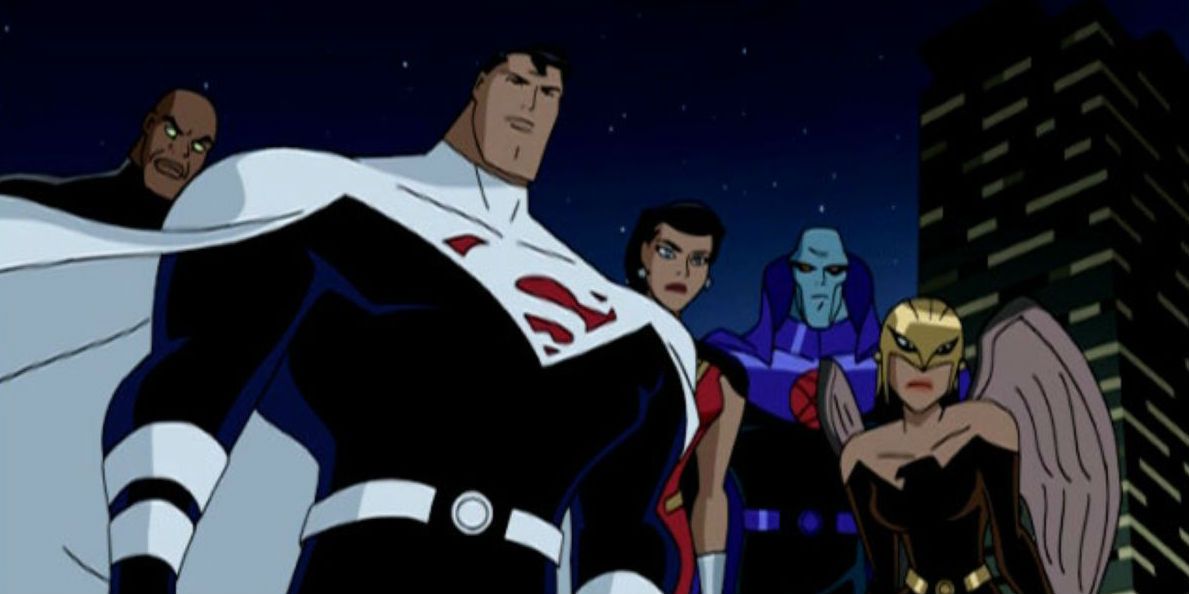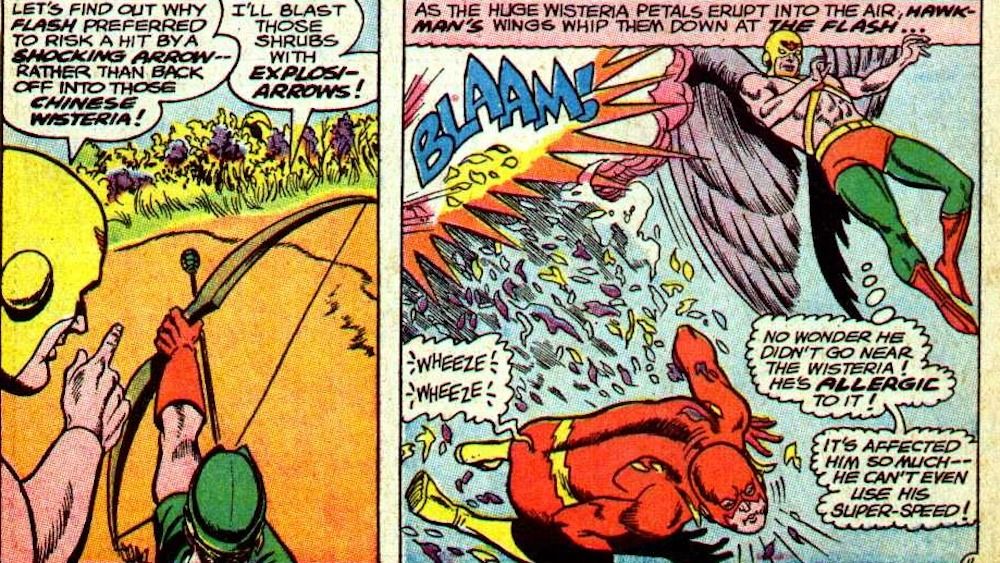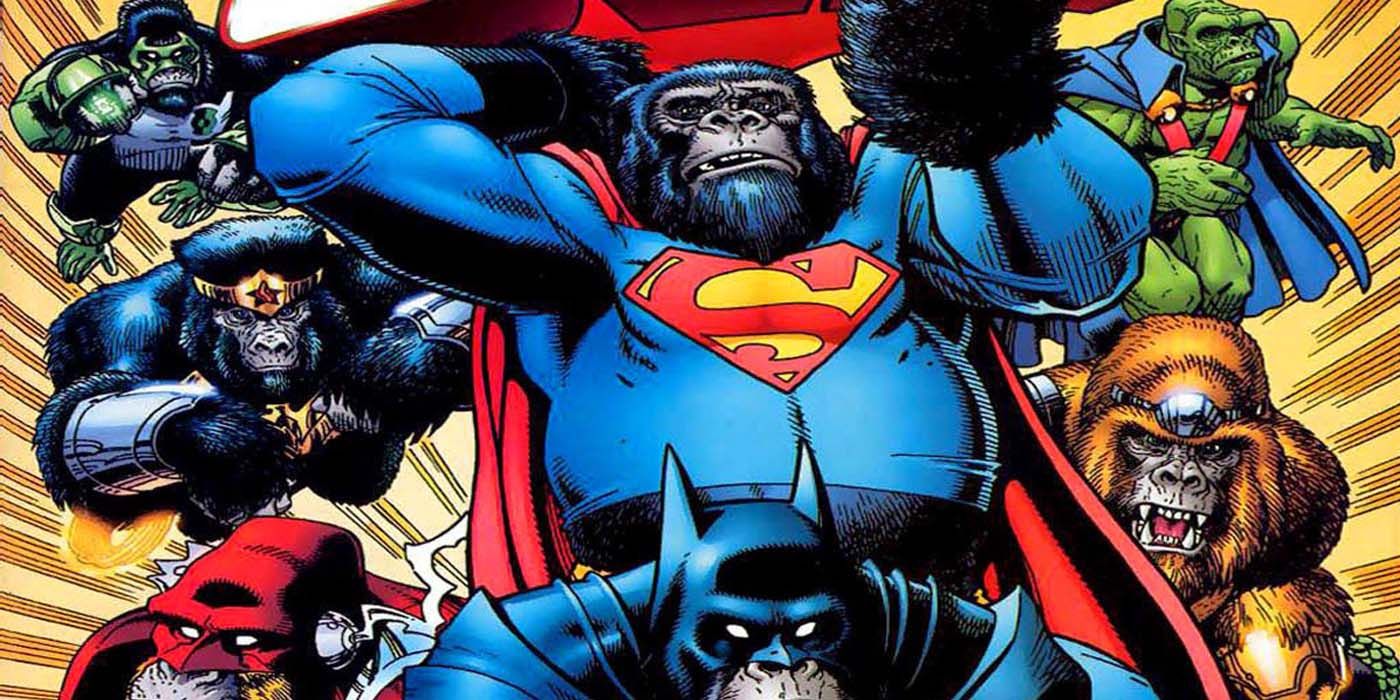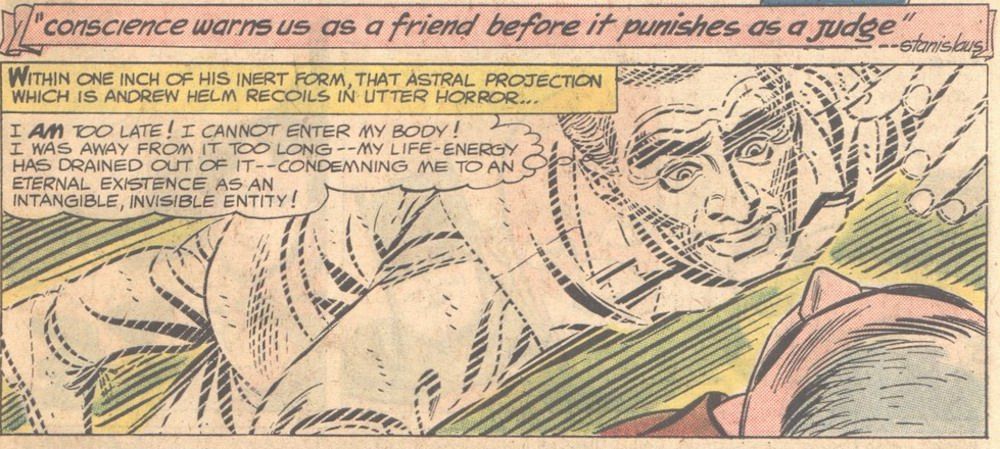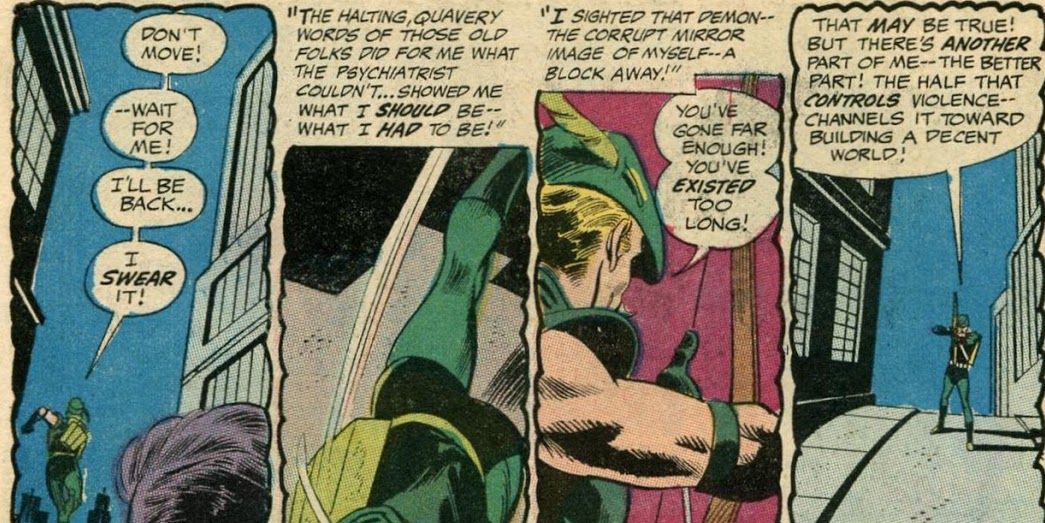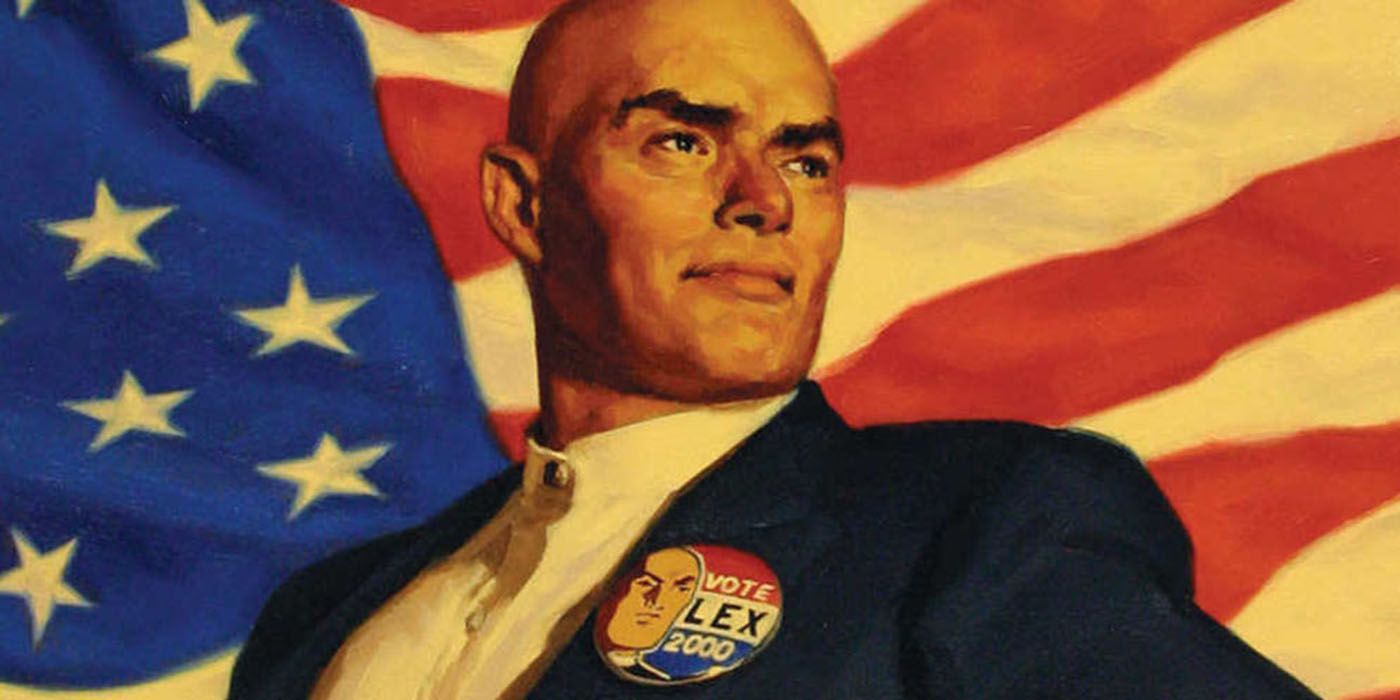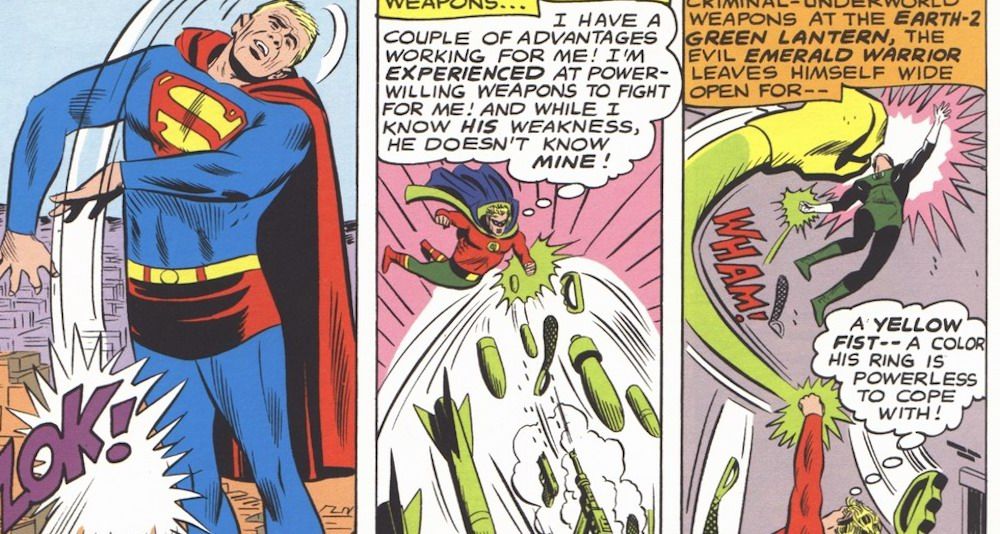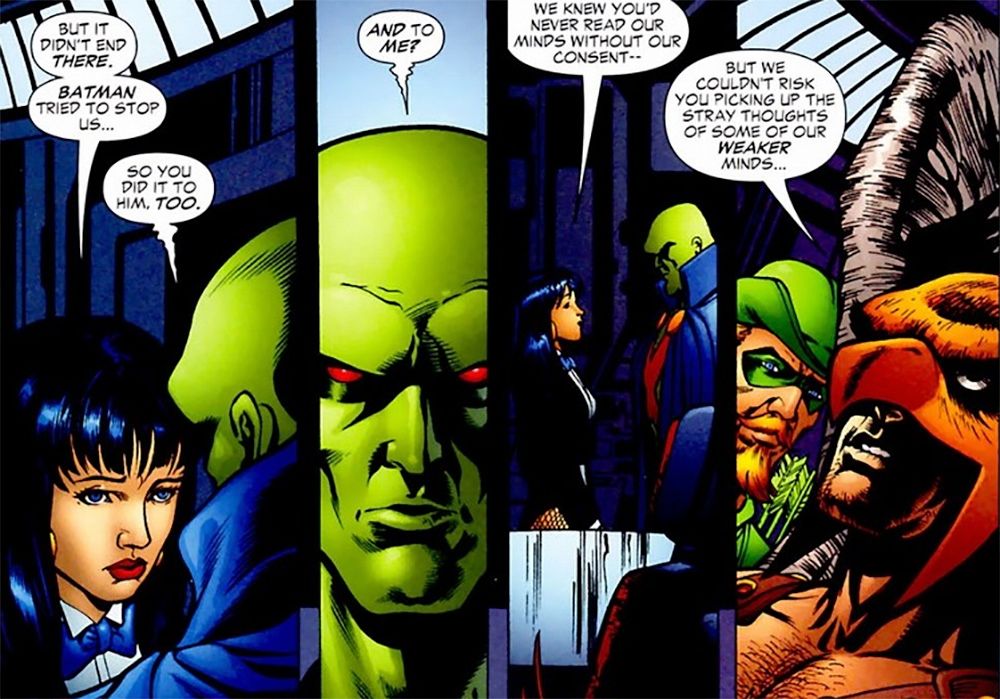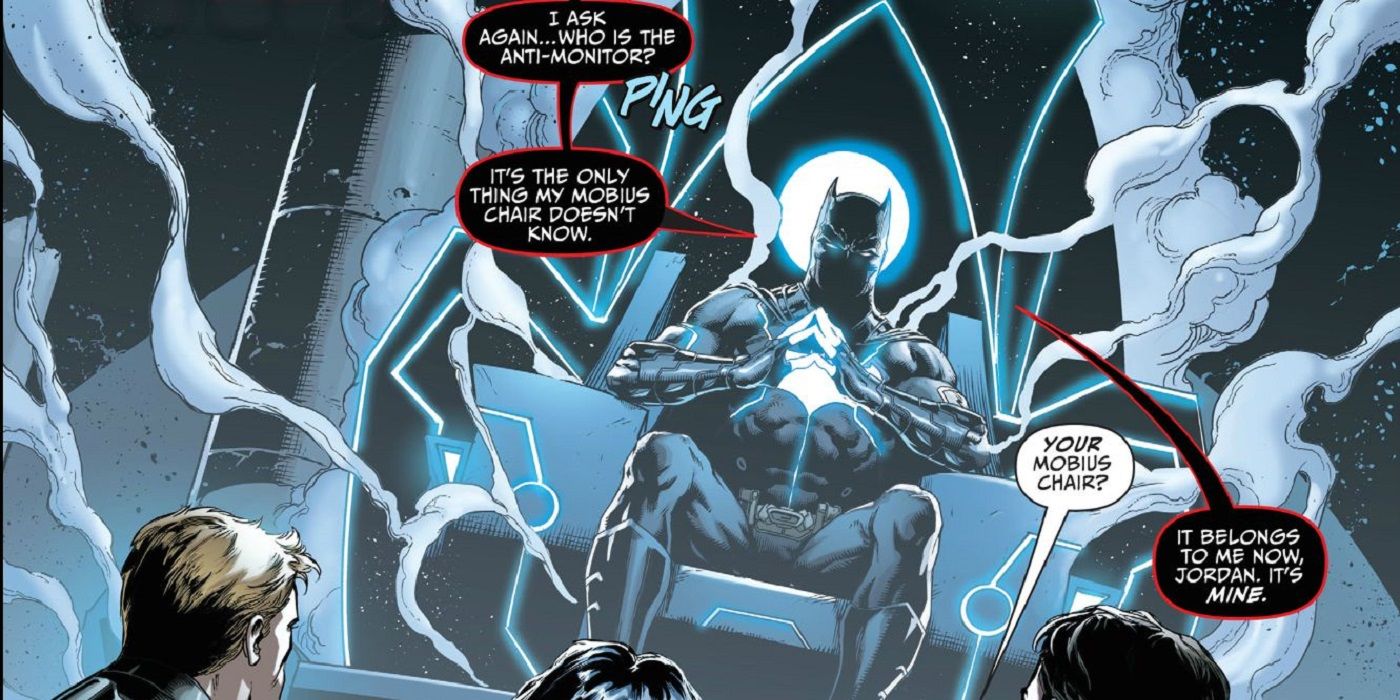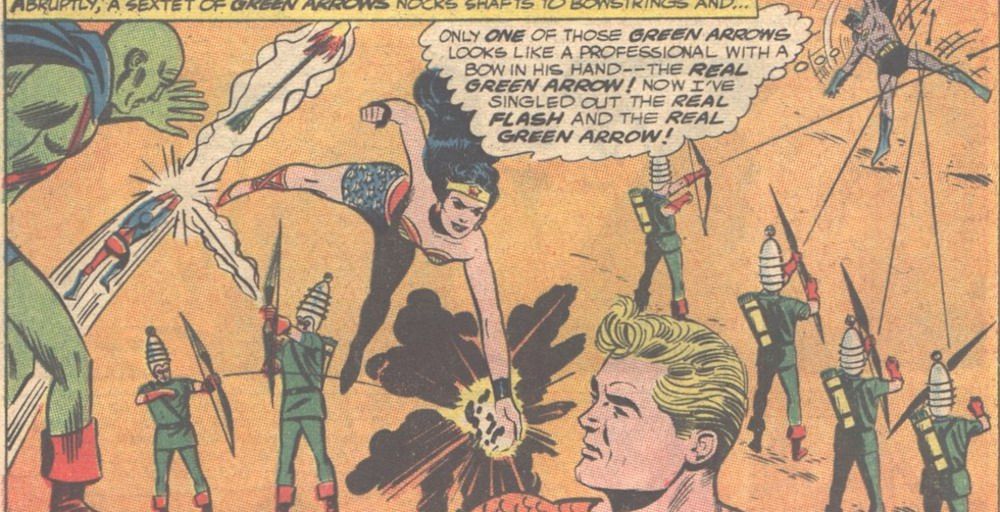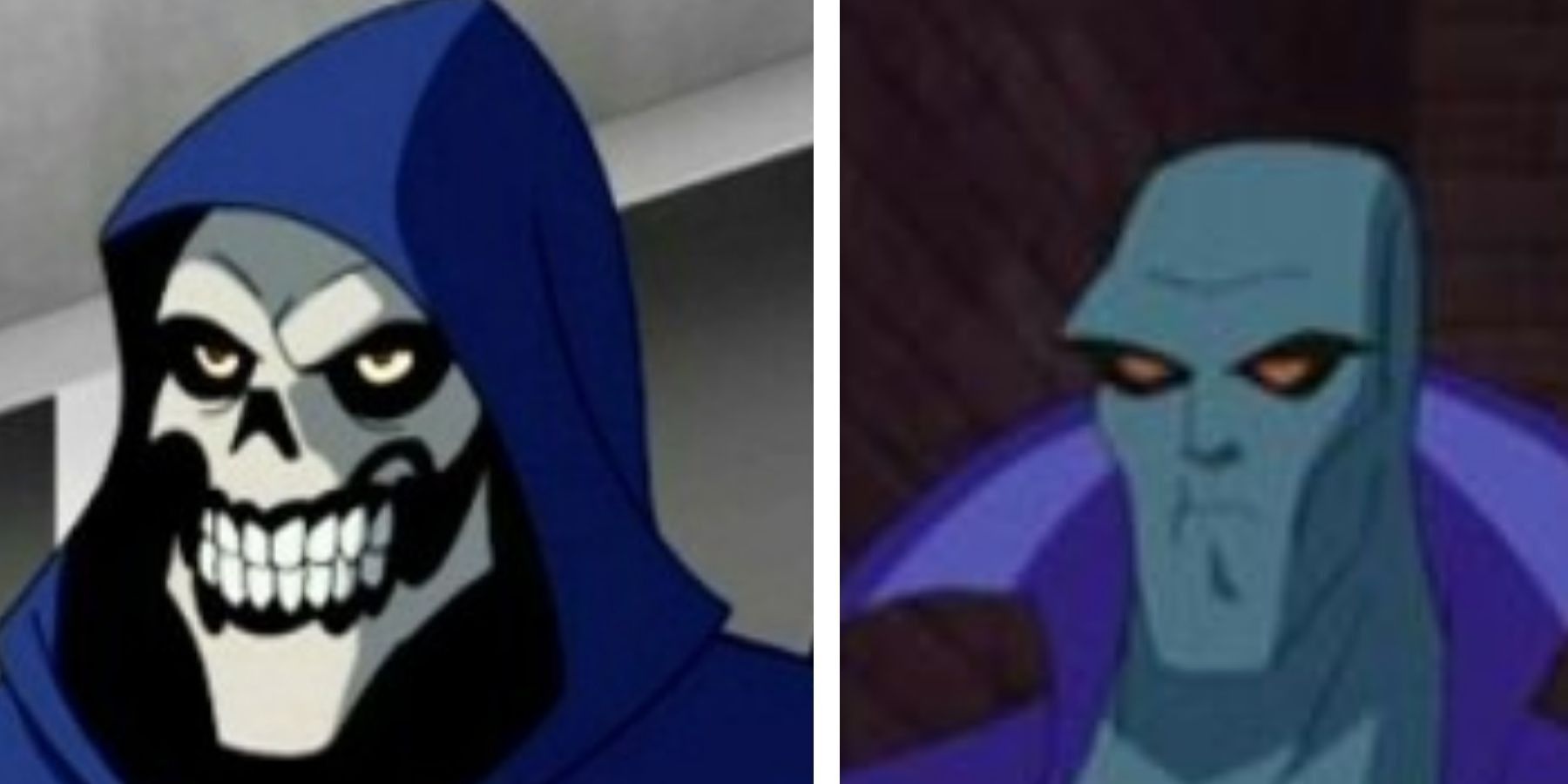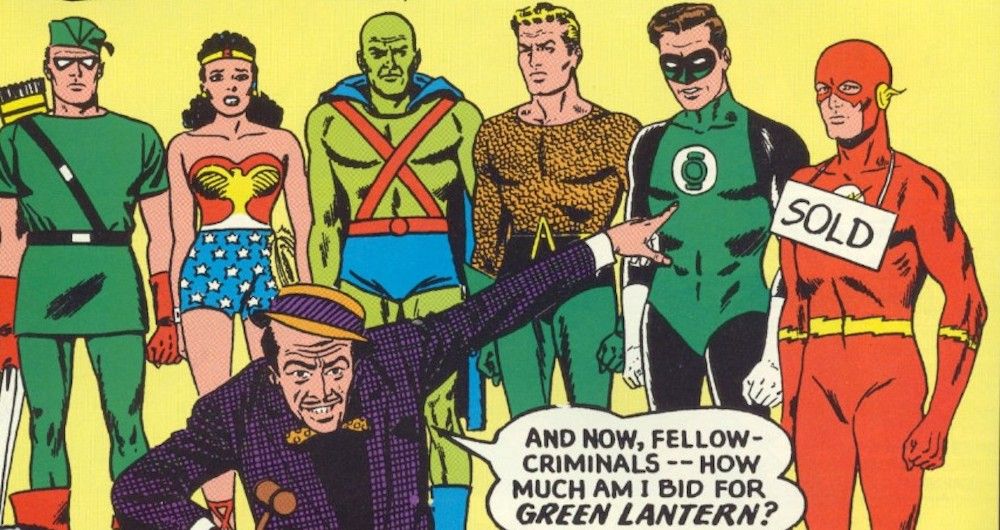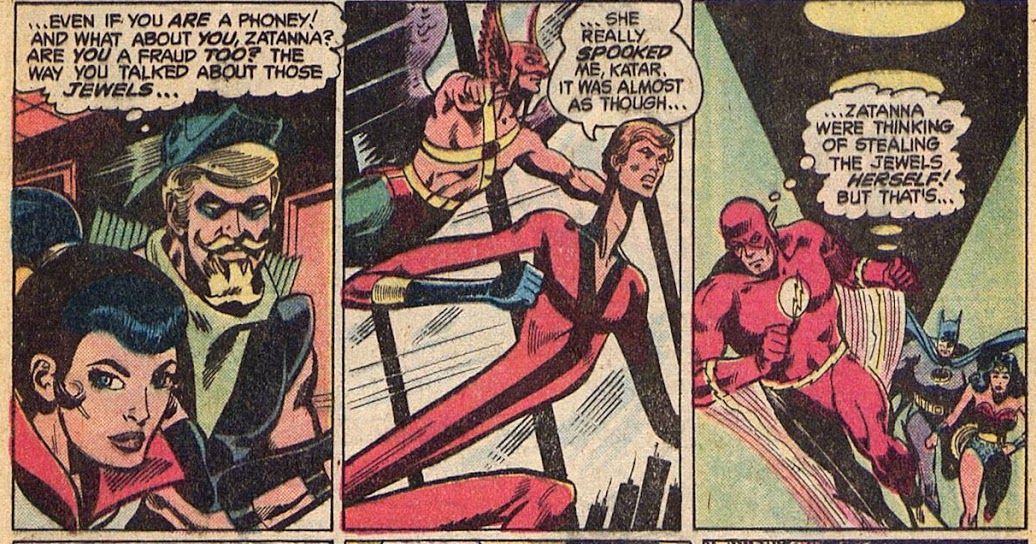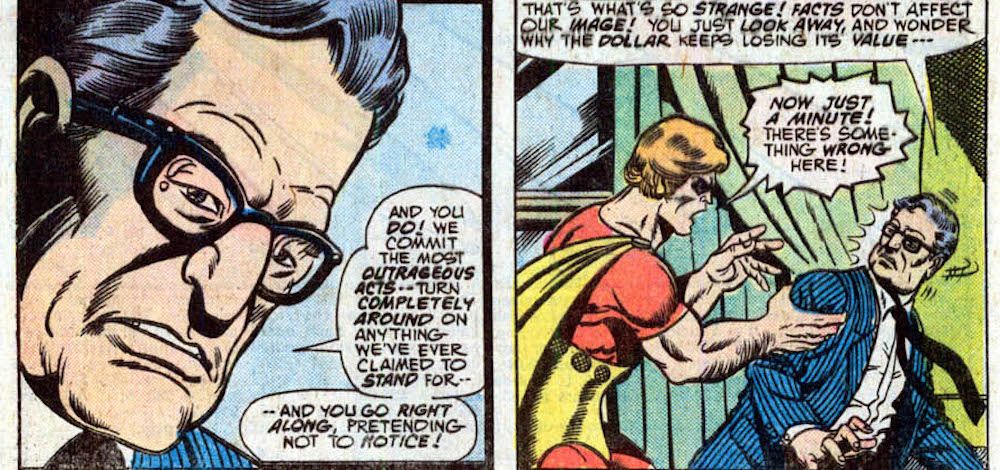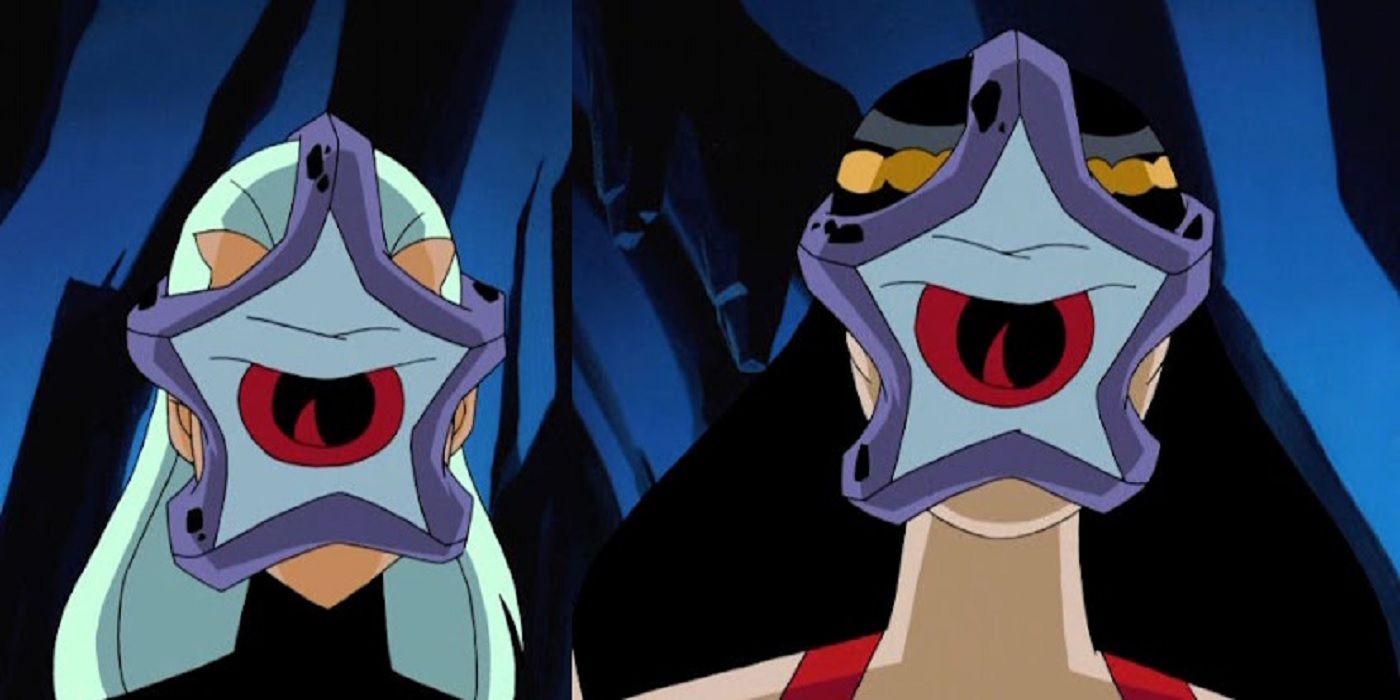Having heroes turn evil can be lots of fun - though not if you actually live in the DC or Marvel Universe, of course. Who’d want to be around when Superman or Flash goes rogue? But if you’re merely reading about it or watching it on the screen, it’s a blast. How can the good guys stop a Wonder Woman gone dark? How easily could the Justice League have been supervillains if history turned out just a little different? In a well-done story, questions like that can keep us spellbound.
The Justice League has been turning into a hive of scum and villainy since its earliest days. In Justice League of America #6, for instance, cheap crook Pete Ricketts enslaved the Justice League of America and made them steal (see #7 in this list). By the time the Silver Age wrapped up, plenty of other villains had seen the benefit of recruiting the Justice League to the criminal side. Of course, it all went horribly wrong at the end — from the bad guy’s point of view, that is — but it was fun while it lasted.
Here are 16 Times The Justice League Turned Evil.
Served the Nazis of Earth-X
Justice League of America #107-8 was the inspiration for this year’s Arrowverse crossover, “Crisis on Earth-X.” In the comics version, members of the Earth-Two Justice Society and Earth-One’s Justice League are accidentally dropped on Earth-X, where the Nazis won WW II. The world is now dominated by three mind-controlling Nazi computers, but the visitors join forces with Earth-X's Freedom Fighters team to destroy them.
What the heroes don’t know is that demolishing the computers only transfers their power to a hidden backup machine. And while the local heroes are immune to the mind-control, the newcomers aren’t: the Leaguers and Society members suddenly turn on the Freedom Fighters.
Fortunately Red Tornado’s android mind is unaffected, so he’s able to smash the last computer and let Earth-X breathe the sweet air of freedom.
The Justice Lords
From what we see of them in TV’s Justice League, the parallel world Justice Lords were identical to the Justice League in all but name. That is, until their Earth's President Lex Luthor had the Flash put to death. A furious Superman killed Luthor and the Justice Lords seized world power. By the time we meet them, it’s no big for them to have Superman lobotomize their adversaries with a blast of heat vision.
When the Lords tried to extend their law-and-order campaign to the JLA's Earth, they lost. They remained for the rest of the series as a terrifying reminder how easily the team could lose its path. As producer Bruce Timm said, where the parallel-world Crime Syndicate are an openly evil version of the JLA, the Lords are misguided enough to think they’re still the good guys.
Aliens turn the JLA evil but give them stupid weaknesses too
Justice League of America #55 was another solo JSA story. Four humans on Earth-Two absorb energy from a dying universe, turning them metahuman, evil, and invincible. After a crushing defeat, the Society recruits four JLA members to help. It turns out the League’s been having no better luck against a similar threat on Earth-One
The solution? Charge up Flash, Green Lantern, and two JSA members with the alien energy — no way that could go wrong, right? Of course, all four heroes become evil and more powerful. Fortunately the power is balanced by a really random mix of weaknesses — wood, water, allergy to wisteria, and laughing too hard (the jokes don't even have to be funny). Once the rest of the teams figure this out, the alien-powered adversaries don't stand a chance.
Grodd turns the JLA into an evil gorilla army
JLApe was a 1990s crossover event in which a revolutionary movement, Simian Scarlet, declares: today Gorilla City — tomorrow the world! To recruit the Justice League to their speciesist agenda, Simian Scarlet turns them into gorillas. The Leaguers now feel an instinctive kinship with their fellow apes and are willing to side with them against humanity — until, with the Martian Manhunter’s psychic support, their true minds reassert themselves. But for how long?
It turns out Gorilla Grodd is behind Simian Scarlet, manipulating them to gain (what else) power absolute. Martian Manhunter finds a way to take him down after which the League regains its humanity (and Martian-anity). In an age of epic crossovers that Change Everything Forever, JLApe stands out for not taking itself at all seriously.
The Justice League lets the Earth annihilate itself with a nuclear war
Like the Justice Lords, Andrew Helm saw himself as a hero. Frustrated with humanity’s moral failings, Helms developed a “corticonscience” machine that compelled people to behave decently. Dictators turned democratic. Warring nations made peace. Supervillains reformed mid-fight. It was utopia until Helm's death left his machine running wild.
Instead of peace, the world’s leaders suddenly started reaching for their nuclear footballs. The JLA’s response: who cares? Under the influence of the malfunctioning machine, the team decided it would be wrong to interfere. So what if people get murdered, oppressed, or die in a nuclear blast? What gives the League the right to object? It's almost a parody of countless later stories in which law or ethics tie the JLA's hands.
Fortunately the machine couldn't affect Superman, who restored his friends to normal with Green Lantern's power ring. They got back to saving the world.
The members dark sides manifest as boring evil beings
Justice League of America #75 gave the JLA the dullest dark sides ever. An experimental machine that reveals people’s inner fantasies accidentally brought the JLA’s worst, nastiest desires to life as the Destructors. Except they didn’t do anything nasty - they just bragged about how they were “iron men” superior to the regular League before they got their butts kicked.
Green Arrow was the exception - paralyzed by his dark side's accusation that he became a superhero purely for kicks, not to help people. Oliver eventually realizes there's more to him than just a love of excitement, after which his dark side goes down.
The evil JLA were actually meant to be a pastiche of the Avengers, hence little details such as the "iron man" line. If you missed the Avengers angle, don’t feel bad — everyone else who read it did too.
Luthor's Injustice League trades bodies with the Justice League
The Silver Age miniseries (set, yes, during the Silver Age), suggests the Justice League's greatest power is the trust the world has in its members. After the alien Agamemno transfers nine villain minds into the League's bodies (the easiest way to get the JLA to assist him), the real heroes set out to destroy the JLA's reputation. That way Luthor and the other villains can't exploit the world's faith in the League.
The trick works great, which is bad for the League when they return to their own bodies. Worse, Luthor double-crosses Agamemno and uses the alien's plan to seize absolute power. When the League inevitably outwits him, Luthor claims he was just the alien's mind-controlled puppet — but to prove it, he has to use his media empire to clear the heroes' names. That stung as badly as losing.
The Justice League becomes the “Lawless League”
Justice League of America #37-8 was the first JSA solo adventure since the Golden Age. Earth-One nitwit crook Johnny Thunder gains control of the magic Thunderbolt spirit from Earth-Two. The Thunderbolt can’t beat the Justice League so Johnny has it erase the JLA from existence. In the new timeline Krypton never blew up, lightning never struck Barry Allen, etc.
When the Justice Society shows up to investigate, the Thunderbolt restores the JLA, but with the personalities of Johnny’s mob buddies. The JSA easily beat the inexperienced villains, but the T-bolt then overcame every JSAer but Doctor Fate. Their magical battle left Johnny so battered by the side effects he wished he’d never even met the Thunderbolt. The spirit was happy to erase the entire adventure from reality.
The Justice League mindwipes its own members
In hindsight, one of the creepier things about the Silver Age was how casually superheroes would mind-wipe or hypnotize anyone who learned their secret identities. Hal Jordan even joked once about how old-hat that was getting.
In 2005’s Identity Crisis things went a lot further. After Dr. Light rapes the Elongated Man’s wife Sue, some of the JLA suggest Zatanna brainwash Light to end his crimes. Instead of reforming him, it makes Light a basket case. Batman is shocked when he learns about this, so Zatanna erases his memory of events. Flash thinks mind-wiping is such a good idea he has Zatanna do it to one of his enemies.
When someone murders Sue, the ugly story comes to life as the League hunt the killer (who actually has nothing to do with the brainwashing). It's definitely not one of the JLA's heroic moments.
TV.
Defeating Darkseid transforms the JLA into warped, ruthless gods
The “Darkseid War” arc in Justice League pitted the League against the monstrous gods of Apokolips. But in grappling with monsters, the heroes became them.
Superman, charged with energy from the firepits of Apokolips, became a god of strength, arrogant, and contemptuous of mortals. He smashed up a Metropolis diner because the owner didn't serve Superman's apple pie up fast enough.
Batman seized control of Metron’s Mobius Chair, giving him absolute knowledge. He began capturing criminals before they'd committed crimes, even though the cops couldn't keep them jailed. Batman even threatened to kill his parents' murderer, Joe Chill, before the chair balked at the demands he was placing on it.
Flash merged with the Black Racer, an agent of death, and struggled to keep his murderous impulses under control.
Eventually the League rejected godhood, but it wasn't easy.
Brain Storm turns the Justice League into his evil clones
Brain Storm was a remarkably quirky Silver Age villain: his stellar powers could work miracles, but when it came to strategy he was a nincompoop. Brain Storm never planned; he simply used whatever tactic popped into his head. In Justice League of America #36, for instance, he found himself cornered by some of the League, so he turned them into obedient duplicates of himself.
When the rest of the JLA shows up, it doesn't occur to Brain Storm to do that again. Instead he keeps turning himself and his mind slaves into duplicates of themselves — all Supermen, all Batmen, all Flashes, and so on. Despite the ruse, the remaining Leaguers figure out which clones are their friends and which one is really Brain Storm. They knock him cold before he can get another wacky idea.
Evil Dream versions
With power stolen from Morpheus the Sandman, Doctor Destiny has been tampering with the Justice League’s dreams since the Silver Age. In an early caper, he materialized the JLA’s dream selves, even more powerful than the real heroes, to destroy them. In Justice League America #72, he topped that.
Discovering the Atom suffering a nightmare of the League turning ruthless, Destiny uses his power to flesh out that dreamworld. In the enhanced dream, Hawkman casually amputates villains, Green Lantern takes over the White House, and the JLA nukes China for refusing to submit. The Justice Lords were softies by comparison.
Destiny's ultimate goal is to give the dream substance so that it replaces the real world. Fortunately some of the League stumble into Earth-Dream sooner than anticipated. Despite Destiny putting the Atom into a coma, the heroes wake him up and end the nightmare.
A loser with a mind-control ray recruits the Justice League into crime
Calling petty crook Pete Ricketts a sixth-rate JLA foe would be generous. Ricketts was nobody amounting to nothing until he stumbled across a mind-control device called the Cyberniray. When he learned the mob was offering a cool million to anyone who could take down the JLA, Ricketts enslaved the League with the ray, then frog-marched them into a mob meeting
Rather than kill the heroes immediately, the crooks have Ricketts send them out on a crime spree. The JLA can’t disobey so it’s big gains for zero risk, right? You know better, of course, but the gangsters didn't.
By the time the crime spree is over and the JLA are stuck in deathtraps, honorary member Snapper Carr has swiped the Cyberniray and freed his friends’ minds. They break out of the traps with teamwork and Ricketts vanished into deserved obscurity.
Another day, another villainous body swap
Villains pulling a body swap would have much more success if they just killed their old bodies after the switch. In Justice League of America #166-8, for instance, the Secret Society of Supervillains trades minds with some of the League, then locks them in a power-proof prison cell. As it turns out, the cell's broken — Superman kept meaning to get around to fixing it, but never did. Which works out well for the heroes.
Initially nobody believes the crooks are really Superman, Flash, Green Lantern, and so on — but the Secret Society's skill set doesn't include acting. Naked displays of greed, Green Lantern hitting on Black Canary, Superman not knowing key facts about the League — before long it’s obvious the good guys are not themselves. Ironically it’s Superman in the Wizard’s body who uses the villain’s magic to take down the Wizard in Superman's form.
Marvel’s JLA, the Squadron Supreme, sells out to the man
Writer Steve Englehart once had Captain America quit because of disillusionment with the United States. In Avengers #141-8, he uses the Squadron Supreme, Marvel's parallel-world Justice League, to criticize blind loyalty to the government.
The Avengers discover the CEO of the corrupt oil company Roxxon is part of a dimension-spanning serpent cult that includes the president of Earth-712, the Squadron's home.The president sends the Squadron to help Roxxon, launching a battle that sprawls across both Earths.
The Squadron insist they're patriots. Sure, corporate America only runs their government, but that doesn't make serving your country wrong, does it? In between trading punches, the Avengers try to convince the Squadron that bucking a corrupt system makes more sense. By the time the Avengers go home, the Squadron's begun to see the light.
Members of the JLA wear starfish on their faces
It used to be a joke that the League’s first appearance pitted them against a gigantic, evil, alien starfish. Justice League of America #189 changed that, as Starro became a serious threat. Gerry Conway's story showed Starro's mind-control powers could extend to take over the entire planet. His victims in that story, and several since, included much of the Justice League.
Of course, lots of villains can do the same thing, but penciler Rich Buckler gave the alien's powers a distinctive element: Starro brings people into a Borg-style hive mind by fastening a clone starfish over their faces. The unique visual look undoubtedly contributed to Starro's continuing popularity. He's even extended his reach to Batman: The Brave and the Bold and Batman Beyond on
---
Got a favorite story about the Justice League behaving badly? Share it in comments!

